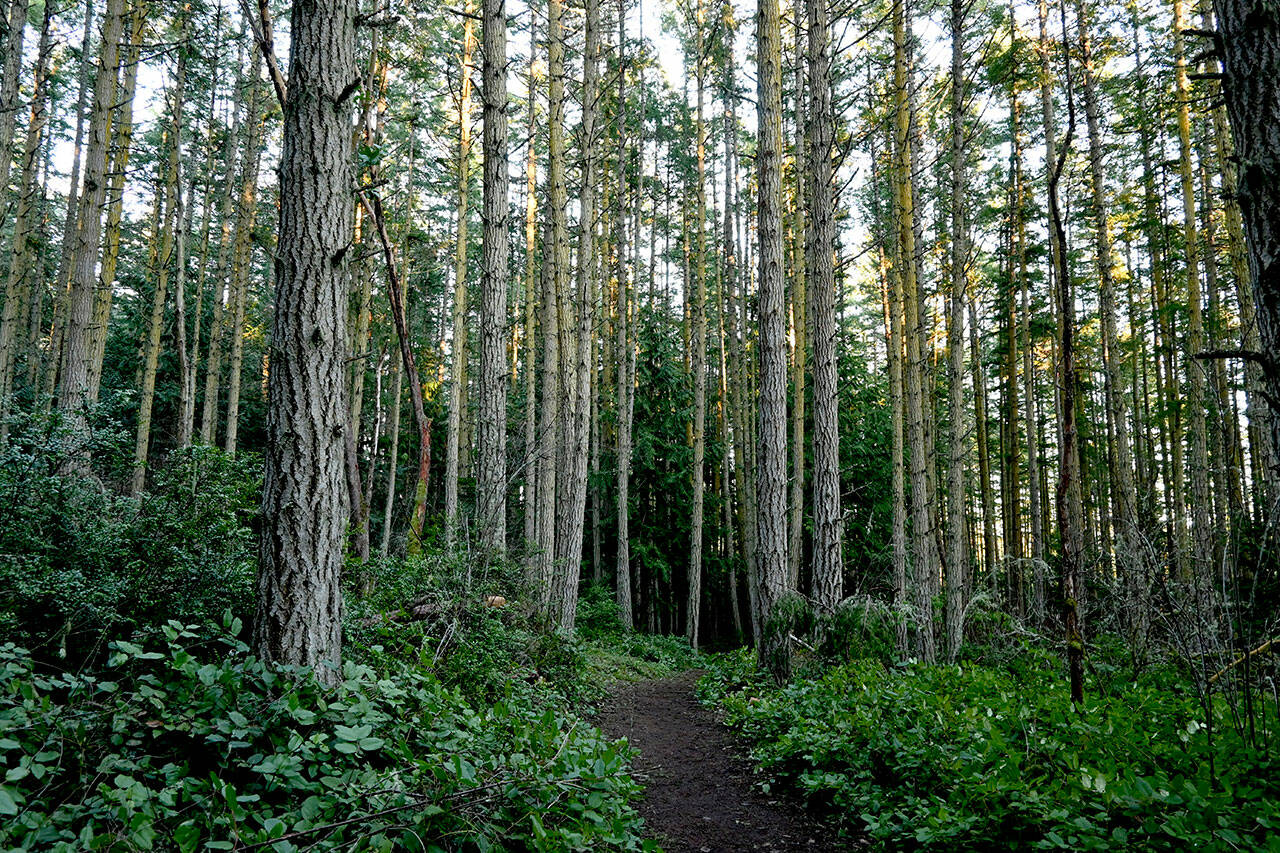State parks leaders are hosting an open house this month to give an overview of proposed changes and hear from community members about the Miller Peninsula State Park property.
Staff from Washington State Parks host the event set for 6-7:30 p.m. Tuesday, Oct. 18, at the 7 Cedars Resort, 270756 U.S. Highway 101.
This in-person-only open house begins with a brief introduction and overview of the planning work to date, status of the project and anticipated next steps, parks officials said.
The presentation will be followed by an informal opportunity for members of the public to speak with Washington State Parks director Diana Dupuis and park staff, who will be available at individual stations to answer questions.
Miller Peninsula is home to the 2,800-acre undeveloped park east of Sequim. The property includes a trail system for hikers, mountain bikers and equestrians through a beautiful second-growth forest. It also includes three miles of saltwater shoreline on the Strait of Juan de Fuca and Discovery Bay.
State planning in the area has been a contentious subject for many nearby residents and those who use the park, however; many neighbors and park users for several years have urged the State Parks system to curb park development plans, to keep Miller Peninsula State Park mostly undeveloped.
The park, which already includes a trail system built and maintained by local hikers, mountain bikers and equestrians through second-growth forest, has long been eyed by state planners as a “destination park.”
Since at least the mid-2000s, and in 2007, parks officials have approved a vision for park “nature within reach,” with options that include a central village lodging and amenities, wildlife viewing, interpretive displays and day and night use (lodging and camping).
In mid-July, State Parks board commissioners voted to put forth a request for $600,000 for creation of a master plan and environmental impact study of Miller Peninsula State Park in the next state biennial budget.
Park staff originally had more funding set aside for development of the Sequim-area property, noted Kyle Murphy, state parks capital program manager, but based on conversations with stakeholders decided to focus on a master plan and EIS.
“We did make a slight deviation from [projects] commission’s direction based on feedback and ongoing feedback from the community around Miller Peninsula,” Murphy said, in detailing park staff recommendations for capital projects on July 14.
In a January meeting, Nicki Fields — planning lead for the State Parks system — detailed three primary options for Miller Peninsula State Park: Immersed in Nature, Village Center and Traditional.
The Immersed in Nature concept, she detailed, spreads out a number of nature-focused amenities, with two main camping loops in the park’s center and primarily undeveloped areas on the park’s west side.
The Village Center option sees most development in the parks center around a lodge, with two camping loops, an education center, amphitheater, climbing walls and multi-use open lawn area nearby.
The third option, Traditional, offers three relatively large camping loops with about 70, 45 and 40 campsites, a 20-person group camping loop and a day-use area in the Northwest portion of the park, with activities or features including a botanical garden, amphitheater, amphibian pond, artist space and more.
In the parks’ July meeting, commissioner Michael Latimer said the State Parks’ real estate committee talked about the three alternatives, and were interested in the Village Center option.
“I believe from our real estate committee meeting, we … landed on the Village Center option, in order to sort of maximize forest preservation and … build a center where we can cater to park visitors,” he said on July 14.
“We did talk about the fact that there’s been varying degrees of public support and that we need to continue to work with local and regional stakeholders.”
Sue Gilman, a Sequim resident and chair of a local group seeking to preserve what Miller Peninsula State Park offers, spoke in person at the July 14 meeting in Anacortes.
“We wanted a fourth concept — we made that very clear — that would make the park really unique, not the cookie-cutter park: tear down trees, put in roads, destroy habitat,” Gilman told commissioners.
“It would be something that Washingtonians, the government, governor, could look back on and say this is about climate change environment.
“It’s not a destination park. It’s for people who don’t want to be in their RVs and watch TV. They want to get out and walk the park, ride horses, be with nature. This plan to make this a village, for us, is just not acceptable.”
Gilman said she and others were frustrated that it seems decisions have already been made about what the park will become.
“There’s been no transparency as long as we are concerned,” she said.
“It’s very disappointing to hear that everything we have put out, in letters and everything, have not been heard, and we were really hoping to get a fourth [concept] put in before this village is put in.”
Gilman wasn’t alone in expressing concerns. The majority of the July 14 meeting’s public comment time from meeting virtual attendees were from citizens concerned about development of Miller Peninsula property.



